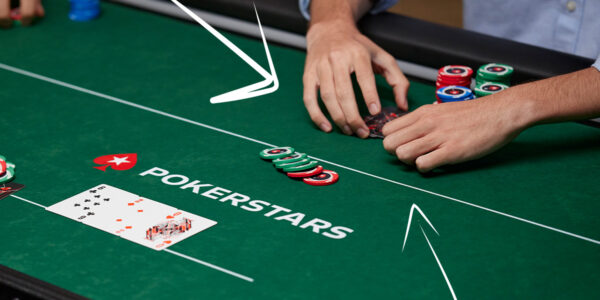10 Strategic Ideas All Beginners Should Know
Poker training content can be intimidating when you are still quite new to seriously studying the game. In this article, I will be forgoing my normal standards of rigour – scrimping on the detail and precision in favour of getting across these ten simple nuggets of strategic wisdom in the clearest, most utilisable form possible.


I hope that an inexperienced poker player might have ten ‘aha’ moments without needing to look up a bunch of jargon. Off we go.
- Always remember to look at the pot odds.
It is possible to invest money profitably with a much weaker hand when the pot is laying you a higher return relative to your investment. For example, Q2s in the Big Blind is a break-even hand against a Cut Off 2.5BB raise in most games but is a massively profitable call against a 2BB raise. This one small detail has a huge effect on the average net outcome of calling so don’t let pot odds slip under your radar. - You don’t need a promising hand to bet on a favourable flop for your range.
When you’ve raised pre-flop under the gun and picked up a call from the big blind, your range will be very powerful on a flop like A♣ K♦ 4♠ . You might not like this flop when you hold 5♥ 5♠ , but betting will cause your opponent to fold both better hands, like 88, and live worse hands like J9 that can easily improve. Don’t let the emotion of disgust for the flop and your hand cause thoughtless passivity. - 3-Bet to enter the pot whenever you are facing an open raise and are not in the Big Blind.
The problem with cold calling in these non-action closing positions is that you allow others to enter the pot; causing your own equity to fall. You also allow players to squeeze behind you and take advantage of the fact that your calling range doesn’t normally contain the very best hands. Thirdly, calling doesn’t deny equity to the opener. When Villain has opened with a hand like AJo and is going to fold to a 3-Bet, it is a shame to not make him fold his 46% equity when you have TT. - Fold to 3-Bets when out of position if it seems close.
Playing 3-bet pots out of position with a weaker range than your opponent’s is a difficult task to execute correctly. If, for example, you open ATs under the gun and get 3-bet by the Button, you should fold. Even if this hand can break even by calling where skill levels are equal; because this spot is so much harder to play well for you than it is for your opponent, calling will likely have a negative expectation. - Bet the turn with your draws having bet the flop.
There are exceptions to this rule but in general it will be very profitable to semi-bluff on the turn. In doing so, you combine the chance of winning a big pot by making a strong hand, with the money you earn by making your opponent fold the weaker parts of his range. It is rarely wrong to double barrel flush draws, open ended straight draws and even gutshot straight draws in most cases. - If you face a river bet with a bluff catcher, try to imagine how easily your opponent could reach the river with air.
This is the number one thing that you need to do when confronted with a river bet. In some spots where the board runs out in a dangerous way, it will be nearly impossible for Villain to make the investments he has already made without having at least a pair. Such spots demand that your opponents get very inventive if they’re going to bluff you. Conversely, imagine a board where lots of straight and flush draws miss on the river. Now the opposite is true and Villain will have to show immense restraint not to be bluffing too often. - With a medium strength made-hand, be more inclined to bet lower pairs on the board and to check higher ones.
For example, you find yourself in the big blind and call a Button raise with J♠ 10♠ . You check on A♥ J♥ 6♦ and Villain checks behind. The turn is the 5♣ . You should absolutely check again here. You do benefit much from making Villain fold since he will rarely have two overcards to a Jack and won’t fold if he does. Now imagine that you called with A♠ 7♠ pre-flop, the flop was 8♦ 7♣ 4♠ , the turn was the 2♥ , and that the action was the same. Now you certainly want to consider betting because when Villain folds two random cards he is folding a decent chance of catching up. He very often has two over cards to your pair. - Raise your nutted hands vs. flop continuation bets, especially out of position.
It can be a huge disaster to slowplay when out of position. You need to make sure that the pot grows and that Villain can’t use his position to control the size of it. Your main goal when you flop a set is not to keep Villain in the hand but to win as much as possible when Villain has something he can call with. - Bet the turn big when you double barrel.
When you double barrel on the turn – meaning that you fire the second bet having bet the flop – you usually want to pick a sizing close to pot. You will be barrelling the turn with two types of hands: strong value hands and bluffs. Both of these hand classes benefit from making big pots. Villain’s range on the other hand will contain a lot of medium showdown value hands that would love a smooth ride to showdown. Don’t grant him that privilege. - 3-Bet larger out of position and smaller in position.
When you are out of position, you want to reduce the amount of money left behind in the stacks. This helps to negate the disadvantage you suffer from having to act first on every street post-flop. The less money there is behind the less effective the extra information and pot size controlling benefits of being in position become. In position you are quite happy to have a big more play left in the hand and so going small is fine.












